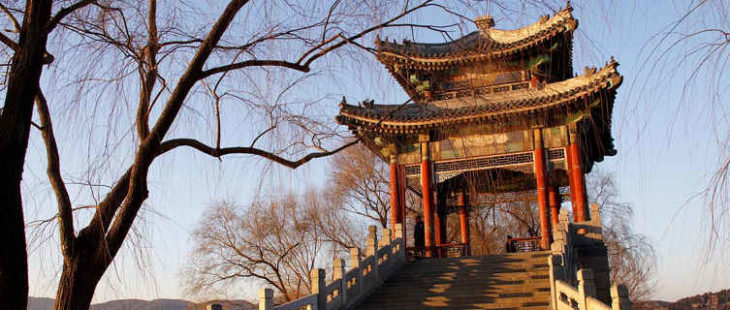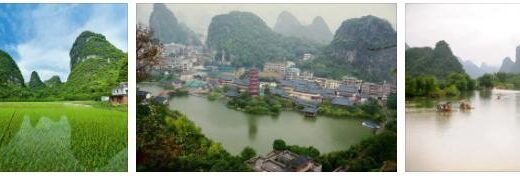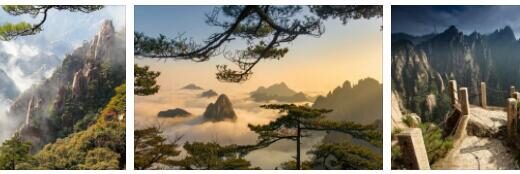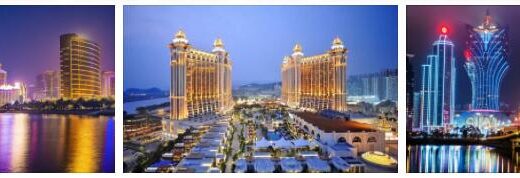Attractions in Beijing
Attractions in Beijing
Beihai Park
Lake Beihai occupies almost half of the 67-hectare Beihai Park and is a popular place for ice skating in winter and boating in summer.
Qiong Hua Island (“Jade-flowering Island”), on the southern edge of the lake, can be reached via an arched marble bridge. There is a Tibetan Buddhism shrine and the Temple of Eternal Peace on it.
Address: Wenjin Street & Xi’anmen Street, Beijing Hours of Operation
Hours: Daily 6 a.m. to 9 p.m. (park); daily 9 a.m. – 4 p.m. (halls and temples).
Entry fee: Yes.
Disabled access: No
UNESCO: No
The Forbidden City
The Forbidden City, also known as the Palace Museum, was built in the 15th century and consists of a huge complex of courtyards, halls, pavilions and gardens that were inhabited by the 24 emperors of the Ming and Qing dynasties. Today it houses an extensive collection of exhibits such as paintings and ancient ceramic and bronze objects. The Forbidden City is one of several UNESCO World Heritage Sites in the capital.
Address: Beijing
Telephone: (10) 65 13 22 55
Opening hours: Daily 8.30am-5pm (April 1st-October 31st) and 8.30am-4.30pm (November 1st-March 31st).
Website: http://www.dpm.org.cn
Entry fee: Yes.
Disabled access: No
UNESCO: No
Temple of Heaven
China’s largest complex of temple complexes, the Temple of Heaven, is located in a large park south of Tiananmen Square. The emperors prayed for a good harvest in this 15th century building. The architecture of the temples is exquisite and the roofs are decorated with blue glazed tiles. In this UNESCO World Heritage Site there is also the Echo Wall, on which even the slightest whisper echoes.
Address: Tiantan Road (entrance at the north gate), Beijing
Telephone: (10) 67 02 88 66
Opening hours: Daily 8.30am-6pm; daily 6 a.m. – 8 p.m. (park).
Entry fee: Yes.
Disabled access: No
UNESCO: No
Jingshan (park with a good view)
To the north of the Forbidden City is Jingshan Park with the Coal Mountain, from where you have a wonderful view of the golden roofs of the imperial buildings. One of the five pavilions on the top of the mountain, called Wan Chun Ting (the “Pavilion of 10,000 Springs”), was once the highest point in the capital.
Address: Jingshan Front St, Beijing
Hours of Operation: Daily 6 a.m. to 9.30 p.m.
Entry fee: Yes.
Disabled access: No
UNESCO: No
Llama temple
The Lama Temple, built in the late 17th century, is in the northeast of the city. It was an educational center for the Yellow Hat sect of Tibetan Lamaism. Today about 70 monks (“lamas”) live here.
The temple consists of a series of halls connected by courtyards. An imposing, 18-meter-high Maitreya (considered the Buddha’s future in Buddhism), which was carved from a single sandal tree, stands in the most distant hall, which visitors can also access.
Address: Yonghe Gong Dajie, Beijing
Telephone: (10) 69 04 44 94
Opening hours: Daily 9 a.m. to 4 p.m.
Entry fee: Yes.
Disabled access: No
UNESCO: No
Summer palace
For the imperial court, the summer palace in the northwest suburb of Beijing was the place to retreat to in the summer heat. It is a UNESCO World Heritage Site and was renovated before the 2008 Olympic Games.
The former imperial residence is located on Lake Kunming, which impresses with its small islands, decorative bridges and a marble boat that was once a tea house. The best way to get to the Summer Palace is by taxi.
Address: Northwest Suburbs, Beijing
Phone: (10) 62 88 16 10
Hours: Daily 06.30-18.00 in summer; 7 a.m. to 5 p.m. in the low season.
Entry fee: (10) 62 88 16 10
Disabled access: No
UNESCO: No
Tiananmen Square
At the heart of modern Beijing is the huge Tiananmen Square, which was renovated in 1999 in preparation for the 50th anniversary of the founding of the People’s Republic of China. Worth seeing are the Mao Zedong Mausoleum, the Monument to the Heroes of the People, the Great Hall of the People and the entrance to the Forbidden City.
Mao Zedong Mausoleum
opening hours: Sun-Tue 8.30am-11.30am and Wed-Fri 2pm-4pm.
Free entry.
Chinese National Museum
Opening times: Daily 9 a.m. to 3.30 p.m.
With admission fee.
Great Hall of the People
Opening times: 8.30am-3.00pm; no admission during Volkskammer meetings.
With admission fee.
Address: Beijing
Disabled Access: No
UNESCO: No
Drum and bell tower
Each Chinese city used to have drum and bell towers, which were used to tell the residents the time and inform them of curfew.
The drum tower, located in the north of Beijing, originally dates from the 13th century. Around 1420, when the bell tower was built, it was reconstructed. The two towers, which look very different, have a good view of Beijing.
Address: Di’anmen Outer St, Beijing Hours of Operation
Hours: Daily 9 a.m. to 5 p.m.
Entry fee: Yes.
Disabled access: No
UNESCO: No
Tourist offices
Beijing Tourism Authority
The Beijing Tourism Authority organizes a number of city tours and excursions. There is also a tourist information office opposite the Beijing Railway Station (tel: (010) 65 28 84 48) near the Howard Johnson Hotel and another near the north entrance to Beihai Park, 49 Di’anmen Xidajie (tel: (010) 64 03 27 26).
Address: Chaoyang District
11-2 Gongti Bei Lu, Beijing
Phone: (010) 64 17 66 27
Website: http://www.bjta.gov.cn
China International Travel Service (CITS)
Address: Dongcheng District
1 Dongdan Dajie, Beijing
Phone: (10) 65 22 29 91
Website: http://www.cits.net
Visitor passes
There are currently no visitor passes in Beijing.



